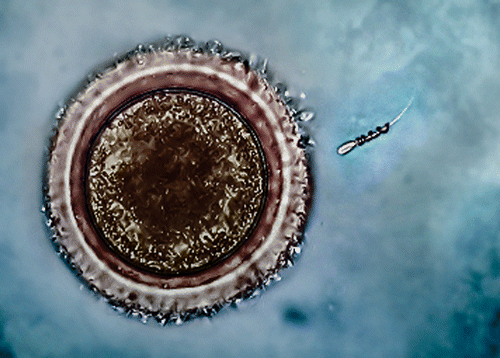A magnetic motor will direct the sperm directly at the target

Successful conception is traditionally achieved due to the huge number of sperm, of which at least one must reach the egg. 200-500 million young children go on the road. 1 out of 500 million is terrible statistics. Even in the case of healthy sperm, it can lose mobility, which reduces the chances of fertilization to zero.
Scientists from the IFW Dresden Institute for Integrative Nanosciences (Germany) have developed a small device - a spiral casing (pictured), which is worn on a sperm cell and how a motor helps him get to the egg.
A motor called Spermbot is a microcoil made of polymer with a metal coating. The size is chosen so that it exactly matches the tail of the sperm. Under the influence of a magnetic field, the microcoil rotates, which moves it forward.
The direction of motion of the Spermbot is determined by the orientation of the magnetic field. The process is controlled by an operator, receiving a picture from a magnetic resonance imaging apparatus.
Having reached the ovum, the motor can even push the sperm inside, making the conception process even more reliable.

The technique still needs to be improved, but the inventors of robosperm are sure that they are on the right track. Scientific work published in the journal Nanoletters .
